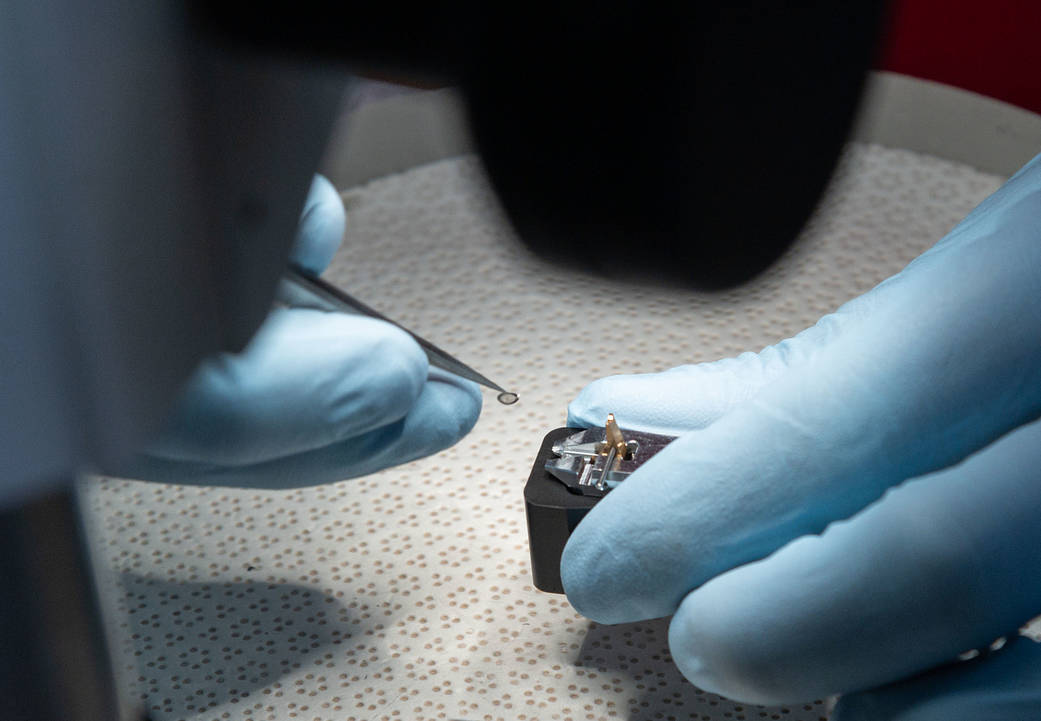In June 2021, NASA received its first sample of asteroid Ryugu, which was returned to Earth in December 2020 by the Japan Aerospace Exploration Agency’s (JAXA) Hayabusa2 spacecraft. This is one of the first samples to leave Japan for preliminary investigation. As deputy leader of the mineralogy-petrology subteam for the preliminary analysis effort, Mike Zolensky was one of the first scientists to examine the sample to determine its basic nature. Alongside Zolensky, Jangmi Han from the Astromaterials Research and Exploration Science Division, and James Martinez of the Structural Engineering Division at NASA’s Johnson Space Center in Houston worked together to complete an investigation of the sample. Sample analyses were performed in the Scanning Electron Microscopy Lab in Johnson’s Structural Engineering Division. This was successfully completed within five days. Zolensky is one of a hundred investigators worldwide to receive a sample from JAXA. Preliminary sample analyses are continuing at Johnson. Studying carbonaceous asteroids like Ryugu could help scientists better understand how the solar system formed.
2021年6月,美国宇航局收到了小行星龙宫的第一个样本,该样本由日本宇宙航空研究开发机构(JAXA)的隼鸟2号航天器于2020年12月送回地球。这是首批离开日本进行初步调查的样本之一。作为初步分析工作的矿物学-岩石学子小组的副组长,迈克·佐伦斯基是首批检查样品以确定其基本性质的科学家之一。与佐伦斯基一起,来自天体材料研究和探索科学部的韩江米和位于休斯顿的美国宇航局约翰逊太空中心结构工程部的詹姆斯·马丁内斯共同完成了对该样品的调查。样品分析在约翰逊结构工程部的扫描电子显微镜实验室进行。这在五天内成功完成。佐伦斯基是全球一百名从JAXA获得样品的研究人员之一。约翰逊的初步样品分析仍在继续进行。研究像龙宫这样的碳质小行星可以帮助科学家更好地了解太阳系的形成过程。
Image Credit: NASA
图片来源:美国宇航局







